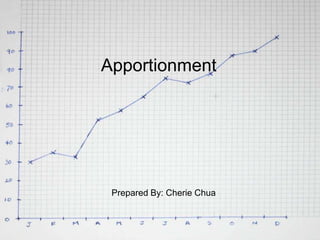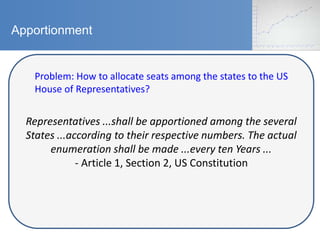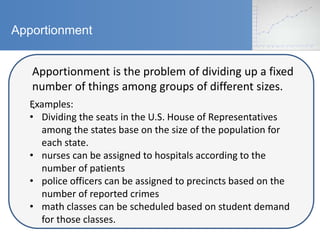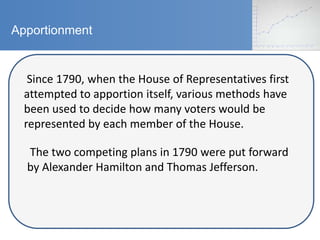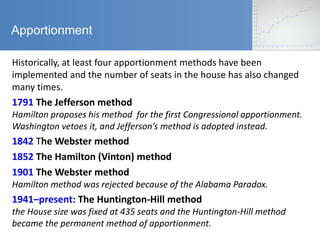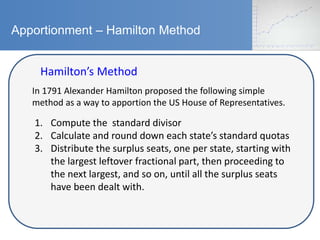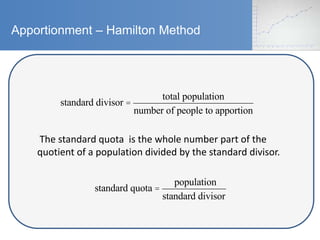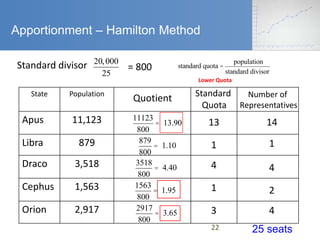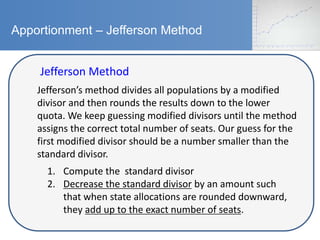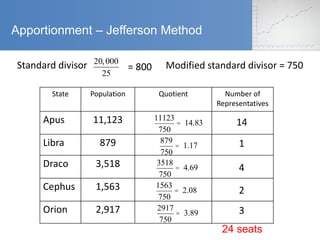1) The document discusses apportionment, which is the process of dividing a fixed number of representatives among groups of different sizes, such as allocating seats in the House of Representatives among US states.
2) Several apportionment methods have been used throughout US history, including Hamilton's method proposed in 1791 and Jefferson's method adopted that same year. Hamilton's method allocates seats based on population quotas and surplus seats, while Jefferson's modifies the divisor to distribute seats exactly.
3) Both methods can result in the "Alabama paradox" where a group loses a seat despite no population change, violating the principle of fairness. Later methods aimed to avoid this issue.
